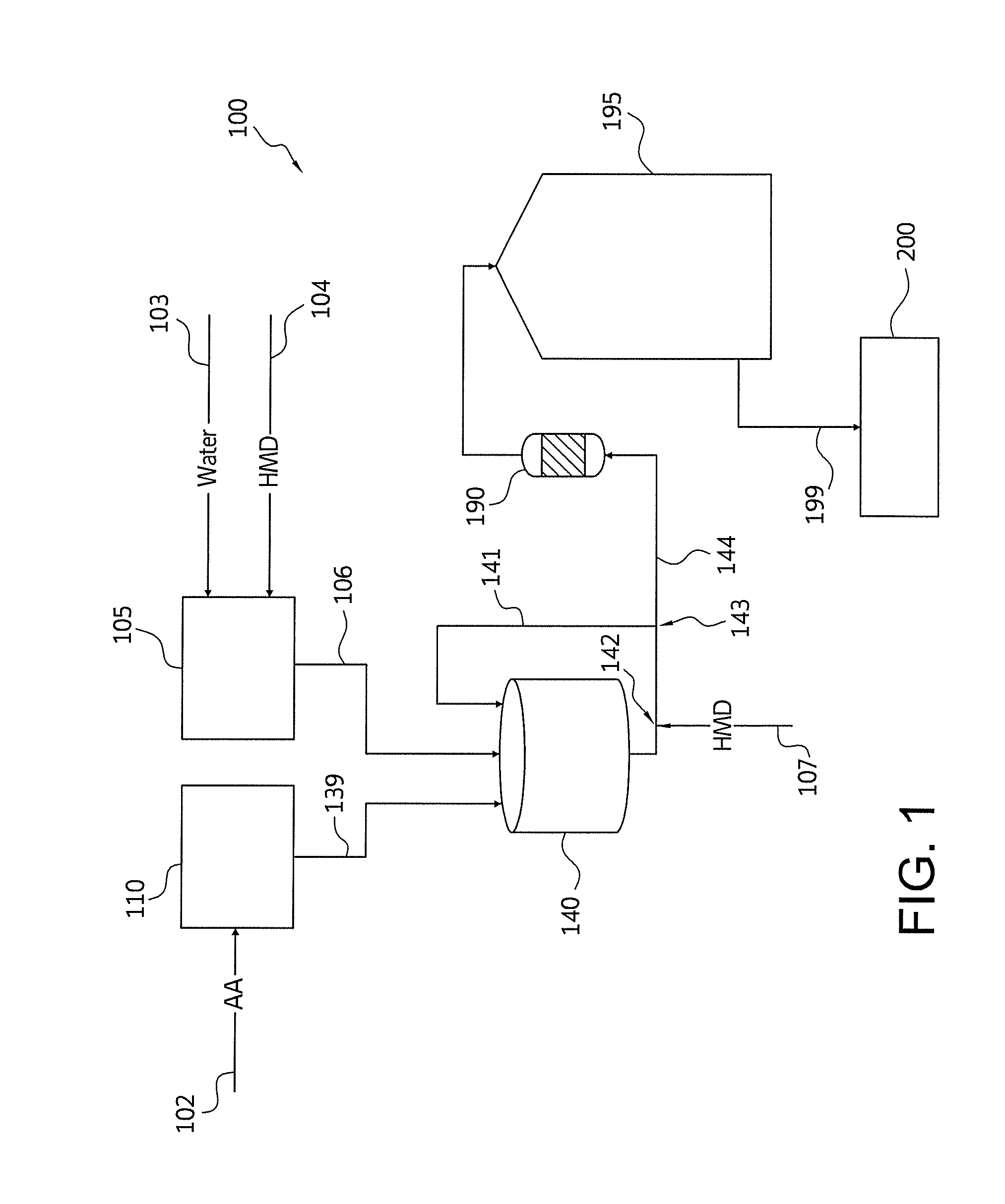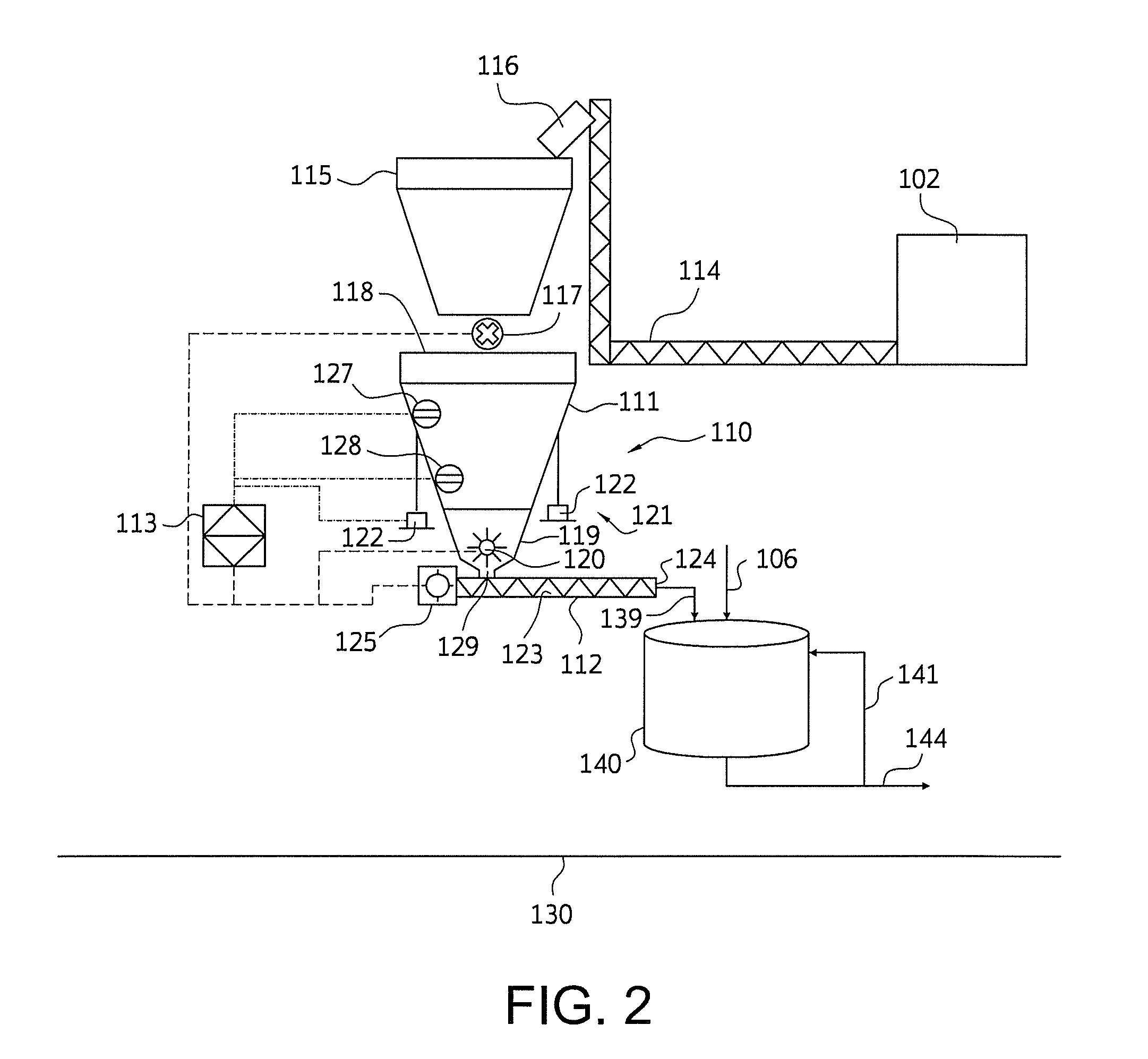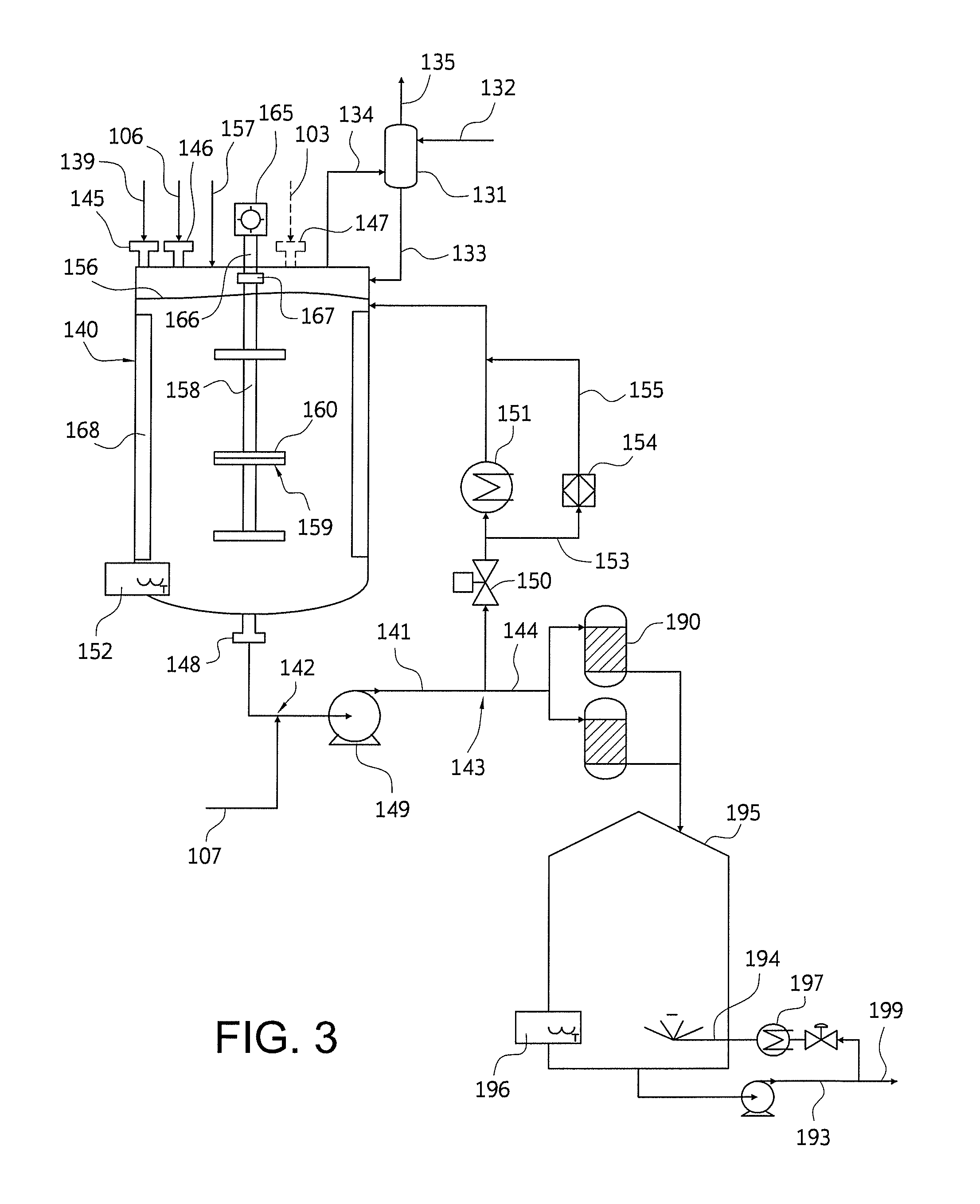Nylon salt solution preparation processes with trim diamine
a technology of nylon salt solution and trim diamine, which is applied in the preparation of carboxylic compounds, amino preparations from amines, organic chemistry, etc., can solve the problems of increasing energy consumption, impracticality of the batch process, and inherent unpredictability of the aa powder feed
- Summary
- Abstract
- Description
- Claims
- Application Information
AI Technical Summary
Benefits of technology
Problems solved by technology
Method used
Image
Examples
example 1
[0123]AA powder is transferred from an unloading system by either bulk bag unloading, lined bulk bag unloading, lined box container unloading, or hopper railcar unloading stations by means of either mechanical (i.e. screw, drag chain) or pneumatic (i.e. pressure air, vacuum air, or closed loop nitrogen) conveyance system(s) to supply vessel.
[0124]The supply vessel transfers AA powder on demand to a loss-in-weight (L-I-W) feeder, and is regulated by a PLC based on selected L-I-W hopper low and high levels. The supply vessel meters AA powder by screw conveyor or rotary feeder at a sufficient loading rate to allow filling of the L-I-W feeder hopper at a maximum interval equal to one-half, and preferably less than one half, the minimum L-I-W discharge time from high to low level of the L-I-W bin, in order to receive feedback of L-I-W feeder feed rate at least 67% of the time.
[0125]The L-I-W feeder system PLC regulates the L-I-W feeder screw speed to maintain feed rate, as measured from ...
example 2
[0127]A model is prepared for producing a nylon salt solution according to a continuous process. The nylon salt solution comprises water and hexamethylene diammonium adipate salt. The model is set to achieve a 63% salt concentration in the nylon salt solution and to achieve a target pH of 7.500. The feed rate of AA is determined based on the desired production of nylon salt solution. Based on the salt concentration and pH to be achieved, the feed rate for HMD and water are determined. Adipic acid is transferred from a powder unloading system to a loss-in-weight feeder at a low variability as described in Example 1.
[0128]The AA powder from the loss-in-weight feeder is supplied directly to the continuous stirred tank reactor by means of a drop chute that is nitrogen sparged at a rate between 20 and 30 nM3 / hour to continuously purge the feeder discharge and chute of vapor generated in the reactor.
[0129]The DCS set point for the loss-in-weight adipic acid feed rate is determined by a DC...
example 3
[0143]A nylon salt solution is prepared as in Example 2, except that the on-line pH measurement is conducted at laboratory conditions: a concentration of approximately 9.5% at a temperature of approximately 25° C.
PUM
| Property | Measurement | Unit |
|---|---|---|
| temperature | aaaaa | aaaaa |
| temperature | aaaaa | aaaaa |
| mole ratio | aaaaa | aaaaa |
Abstract
Description
Claims
Application Information
 Login to View More
Login to View More - R&D
- Intellectual Property
- Life Sciences
- Materials
- Tech Scout
- Unparalleled Data Quality
- Higher Quality Content
- 60% Fewer Hallucinations
Browse by: Latest US Patents, China's latest patents, Technical Efficacy Thesaurus, Application Domain, Technology Topic, Popular Technical Reports.
© 2025 PatSnap. All rights reserved.Legal|Privacy policy|Modern Slavery Act Transparency Statement|Sitemap|About US| Contact US: help@patsnap.com



